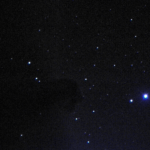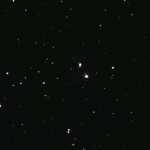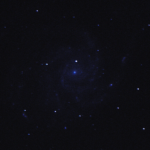2022.01.07 (Sol 5)
2022.01.08 (Sol 6)
2022.01.09 (Sol 7)
PEDRO JOSÉ-MARCELLINO
XO/CJ, MDRS CREW #238
Three days with Crew 238: of the Mars Trilogy, labyrinths, and journalists at the door
MDRS, Sol 5 (7 C)
Mars Desert Research Station, Hanksville, Utah (EUA) — We were forewarned that at some point — usually just about now — one or more of us would start to feel the stress of time passed in rotation, the pressure of the little time left, and the urgency of the many tasks yet to be fulfilled. Like clockwork.
We have been lucky to have spent a sunny week here on Mars, without any extraordinary power preservation measures. But last night Outpost called in and asked us to go into “minimum power use”. So, onward it was to “disconnect every non-essential item, including radios, suits, laptops, phones” and “unplug as much as [we] can”.
We all gathered in the dining room, i.e. our only room, and had some mood light going while I cooked my Cape Verdean katxupa dish using dehydrated ingredients. While I wasn’t quite pleased with the flavour profile (it was missing one hour stewing in red wine) the crew seemed to appreciate it nonetheless, and I appreciated them for this.
The blackout was a good occasion to discuss schedules. Our crew engineer needed to fit some fire drills in the following day’s schedule, others preferred the following day, and suddenly there was a round table on everyone’s individual projects, what each of us had achieved, and what we are still looking for.
We all acknowledged the real pressure of time gone by, admitted there was room for improvement in our strategy, and resolved internally to tackle these changes in the morning, over our typically very hearty breakfast. Insofar as a working crew goes, we function well, judging by what we know from grumpier ensembles (including that of Mars 500). And, as the day broke, we came out of the staterooms rejuvenated and ready to actively find solutions.
But personal dynamics are not the only maker of an analog. The technical and scientific characteristics of the individuals are important too, of course. In our case, we have a project portfolio touching upon diverse areas of natural and social sciences, and an equally impressive array of creative production, some of which crosses into the liminal and hybrid spaces between art and science. Matching all these collaborating (and sometimes overlapping) goals is part of my job as the XO, and it’s an ongoing challenge. But we’ve been doing alright.
Then, there is the physical element of it all. This Hollywood idea of the weightless astronaut is, of course, not what we will find on Mars. On top of that, those first missions will be tough, hands-on jobs for engineers and technicians braving the Martian cold and dust as they assemble the first habs and life support systems for everyone else. Perhaps not the sexiest work, but it reminds me of those brave folks who once built earthly infrastructure in places where there was none and where the laws of physics defy our presence.
I was reminded of all of this today because of our EVA to the magnificent Candor Chasma — a canyon so often mentioned in Kim Stanley Robinson’s Mars Trilogy, that I feel like I’ve been there before. With the bumpy rover ride, the desert hiking, and a heavy suit on a warm day, plus an expected fall over an incredibly obnoxious rock, suffice to say I felt utterly exhausted. On the rover ride back, all I could think about was “it’s shower day.”
Two minutes of organic Marseille soap and hot water made me feel like a movie star.
One of those weightless astronaut movie stars.
MDRS, Sol 6 (8 C)
Mars Desert Research Station, Hanksville, Utah (EUA) — Of all the factors left to resolve before we can send crewed missions to Mars (or any other distant body, for that matter), the most complex are humans. And, if the effects of lower gravity or excessive radiation on the body have been studied, on the emotional and mental elements there is still much to be done.
On Crew 238 we chose this human aspect, in particular, the mental health and personal wellbeing of astronauts, as our common project. We have a calendar packed with activities that follow these pursuits, and we also have Dr. Kay Sandor at hand to ground us with her joy and thoughtfulness.
On the one hand, our two, sometimes three delicious group meals cooked out of unpromising supplies are amazing moments of sharing. Four among us are good, creative cooks with different styles, which is helpful when cooking for different people and accommodating different diets and tastes. We have no shortage of variety. Our commander also experiments with some baking, and Pokrywka bakes us incredible sourdough bread from some ancient Finnish starter. We are truly spoiled.
But this is what people have done for thousands of years: they break bread together, they talk, they linger. Then, we have the morning music sharing, and the evening reflections, in a format that feels so wholesome, and so profound, that it’s almost like we’re doing therapy. Finally, we have activities planned by Dr. Sandor, who is our GHO but also a certified psychotherapist. Her sessions on aromatic and medicinal plants have been a balsam. More than that, they’ve been preludes for the big one: the labyrinth.
At a youthful 74, Dr. Sandor, a member of the Labyrinth Society, is no spring chicken. So, we were determined to find her a rover-accessible spot for the first labyrinth on Mars. Sadly, when the EVA requests went out we realized our original plan would not work, and we decided to try within the campus grounds. It was not ideal. It was not as majestic as we had anticipated, but we could make it work. After an indoor meditative instruction, EVA team one, which included Dr. Sandor herself, attempted to draw a labyrinth near the Hab’s front door. This was not successful.
So, EVA team two went out on a mission, determined to make this work for the crew’s grandmother. North of the Hab, the softer red sand had some give. Engineer Werner, the commander, and I took turns drawing this ancient symbol of wisdom that Dr. Sandro, Kay, had been dreaming of for two years. We each walked it afterward, feeling our heartrates slow as we did, and enjoying the gusts of wind that we could feel
through our EVA suits.
The red dirt, the warm sunset colours, the Mars-like landscape, and MDRS right behind us ended up creating the perfect setting for our iconic photo of Mars’ Labyrinth. When the airlock opened again, Kay was waiting for us with the biggest smile, both grateful and elated, and we got all the love and hugs we needed. And then some rest.
Learning about, drawing, and walking the labyrinth has helped us get a handle on our mental state, through the same knowledge passed between human communities for thousands of years. This design — or variations thereof — has been around for time immemorial (we saw one in Hanksville the day we first arrived) in communities all over the world. We have no doubt, thus, that this will one day be drawn in the red dirt of (real) Mars.
MDRS, Sol 7 (-1 C)
Mars Desert Research Station, Hanksville, Utah (EUA) — Around the world, there are only a handful of permanent Mars and space analogs and a few temporary projects. Each has its own goals. For example, Mars 500, a multinational study in Russia, over a decade ago, tested psychological and behavioural reactions within the crew and their interactions with the outside world. In a study tackling similar themes, by Suedfeld and Steel, the authors indicate the need to create ties of affection, connection, and empathy through the maintenance of contact with loved ones insofar as possible, and perhaps even through the inclusion of other living beings (small mammals, plants, fungi, even bacteria) in these interplanetary long-hauls.
In the case of our multidisciplinary artist-in-residence and scientist Aga Prokywka, these are her bacteria and cyanobacteria, which the whole crew has been mystified about since we all got here. We call them Aga’s pets.
This need for affection and connection (even with other species) is perhaps the reason, she ventures, why some of us (myself included) have grown so fond of Alice-the-desert-mouse, the cute rodent that keeps on coming, and why we are all so curious about her sourdough, and her sprouts, and her oats, and her kombucha, and so on. We’ll get there.
We were clearly starved of contact with anyone. So, the visit of The Guardian USA journalist J. Oliver Conroy was welcomed with curiosity. Strangely, Oliver arrived on foot, alone. He knocked on the door, but anyone who’s been to MDRS will know that this is not an efficient method to announce yourself. Luckily, crew engineer Werner is perennially back and forth between the Hab and the RAM, and radio’s us to get things going.
We got our HSO kitted up to perform Oliver’s final COVID-19 antigen test and welcomed him to the airlock. We even gave him a chance while he spent his 15 minutes there. Full red-carpet treatment. It would be an hour before Outpost reached out to inform us, they couldn’t reach the journalist. We ensured them we had him and were feeding him well — Aga’s sourdough, dehydrated butter, fresh coffee, and six interesting analog astronauts.
We must have spoken for two hours, which revealed how much we missed talking to others, but also perhaps how much there was to say. When we finally got up, Commander Robinson gave him a tour of the Hab (a short one, obviously) and I sat with him to discuss our research schedule, before taking him to Kay’s domain, the GreenHab. I hadn’t been there in many days. It’s looking lovely and so well taken care of, with happy plants whom she plays music to every morning. Kay is a Texas Master Gardener, and it shows. She reminds me of my own grandma, and how grandma taught me to love plants the way Kay loves plants. I think Oliver saw that too, before I sent him off to the Science Dome with the commander and with Aga, and then to the RAM with our engineer.
Meanwhile, I was back upstairs preparing a banquet of our best-rehydrated fare, sourdough, and even water (old desert tradition: give water to your guests, even when you have little). I know I’m biased, but the lunch was delicious, and the guy let out a compliment: “I could not imagine I would eat this well.” This is when we may have made a joke about trying to ensure our source of soylent green is properly fed. He ran with it, and we all had a seriously boisterous laugh as we told him he looked definitely yummier than the last journalist they sent us.
We had just about enough time for a fresh cup of coffee, some personal banter, and a quick try of our Oculus Quest 2, part of our collaboration with Canadian aerospace startup Stardust Technologies — a first for him. It never gets old to see someone using VR for the first time. Space agencies are looking into this very technology as a possible solution to allow astronauts a sense of escape.
Then, onward with our schedule, which this afternoon included the first of the emergency drills Eng. Werner and HSO Turner have been working on for a year or more. In this case, an EVA extraction. Thankfully Aga (the smallest of us) was not the hardest to carry, but with three bodies instead of four in the rescue team, I was panting by the time we closed that airlock. Those EVA fans were just not enough for a rescue operation. But I survived. The victim also lived, and we looked good in front of our guests. We were sad to see him go.
It was late by the time we decided to try our hand at Sunday pizza. Aga’s ancient sourdough, dehydrated tomatoes, and a few greens, and we had a Martian Pizza. Was it great? No. Was it good? Maybe. Did we eat it? Yes. And, speaking of ancient bacteria, this brought about the ideal pretext for Aga to present us all with our own tubes of highly nutritious edible bacteria (spirulina) to raise for the next 3 days, before “we eat it”, she says.
We all named our spirulina tubes. Mine is a collective that goes by ‘they’, has no gender, and responds to any SciFi authors’ names: Aldos, Robinson, Asimov, Steinmüller, Shelley, Orwell. They are one. and I’m not sure I can eat them.






You must be logged in to post a comment.